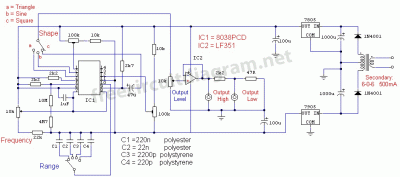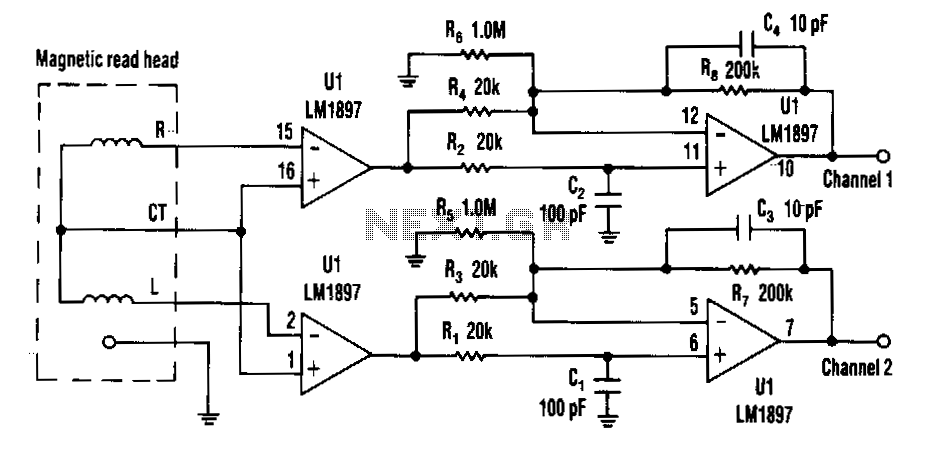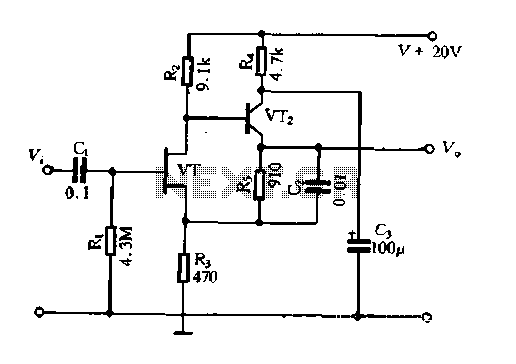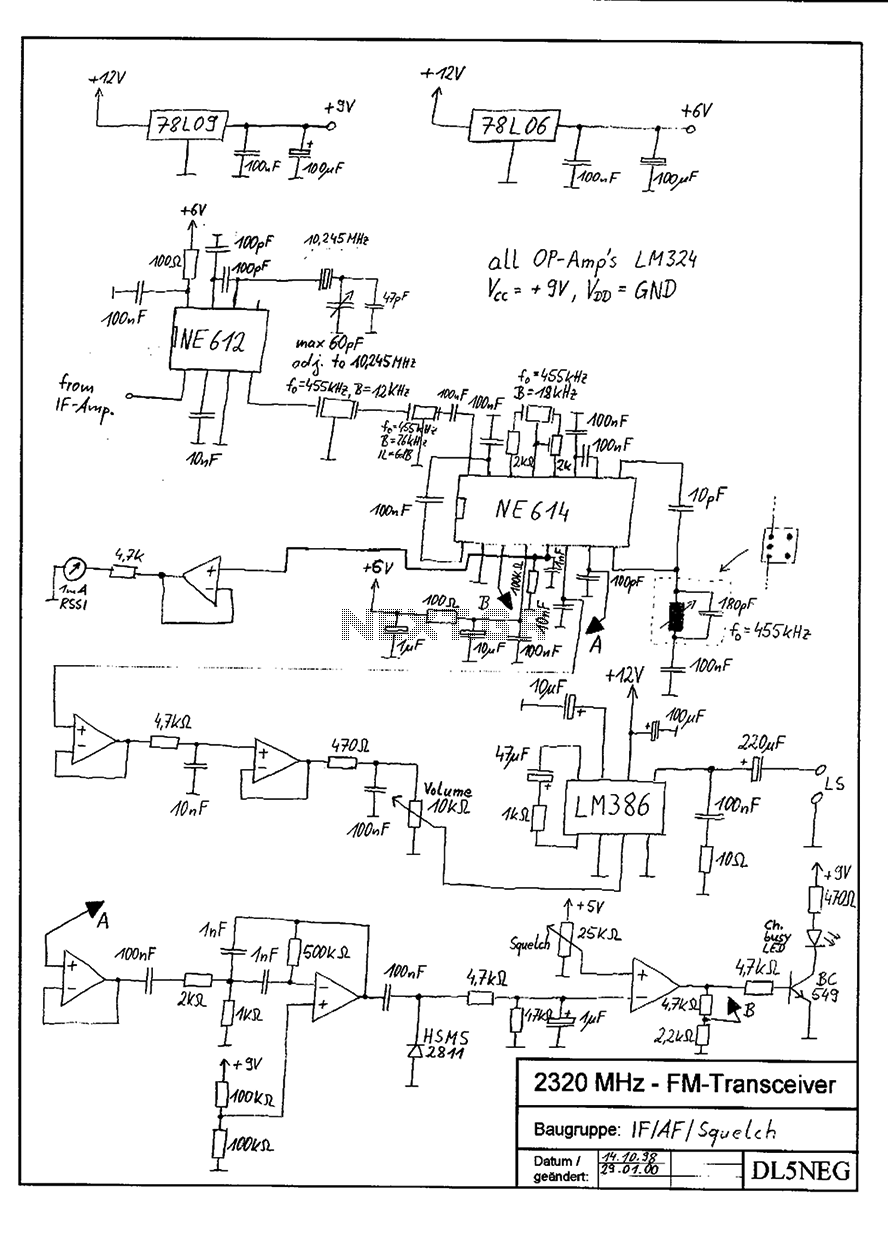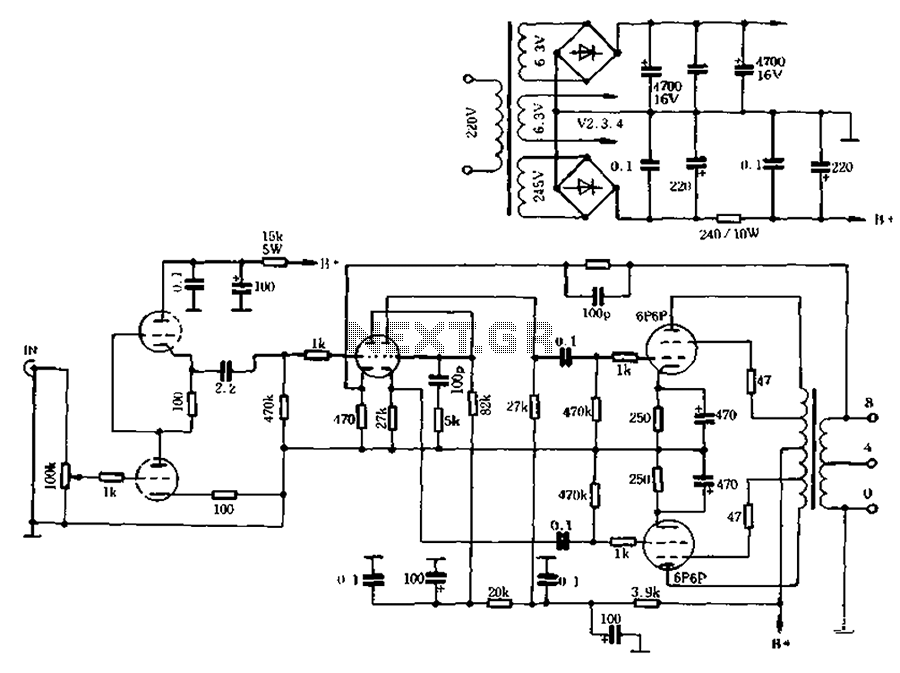
Simple High Quality Preamp For Hi-Fi
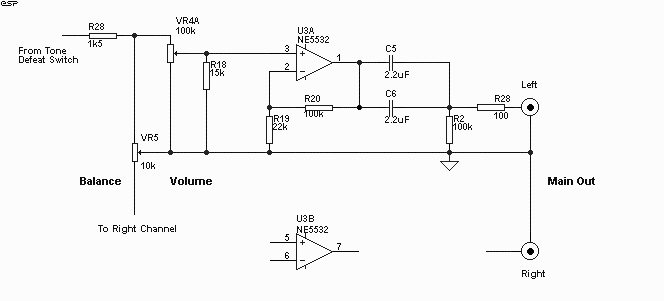
The new version has PCBs available and is recommended for optimal sound quality. For those needing tone controls, Project 97 is an excellent choice, offering superior sound quality and tone control features. While preamps have been widely discussed, they are relatively straightforward to design, and high performance is nearly guaranteed when utilizing modern op-amps. For those who are averse to op-amps, it is advised to read the following two paragraphs. Despite their negative reputation in audiophile circles, it is important to recognize that music typically passes through numerous op-amps in various devices, including mixers, effects units, tape machines, and CD players. Many of these devices may not utilize op-amps of the same quality as those in this design. Dismissing a design solely based on its use of op-amps can lead to unnecessary expenditures for equivalent sound quality. While a high-quality valve preamp may offer a different sound, the notion that op-amps inherently produce inferior sound is a misconception. The featured preamp includes optional tone and balance controls, which can be omitted if desired, although this is not generally recommended. The input switching can be expanded to accommodate additional signal sources; however, this version does not include an RIAA (phono) input. A separate project article discusses a standalone phono preamp that can be integrated if needed. The tone controls deviate from the traditional Baxandall feedback design, utilizing basic passive controls that provide a modest 6dB boost and cut at maximum. Although this may seem limited compared to typical tone controls, it is generally sufficient for minor adjustments. The tone controls have been revised from the original publication, with the treble control now ideally using a 1nF capacitor instead of the previously used 10nF. This adjustment results in a 3dB boost or cut at 6kHz and 55Hz when the controls are at maximum. If the effect is too subtle, increasing the capacitance values of the bass and treble controls can lower the frequency response. A tape output is included, though it can be omitted if not needed, but retaining it is advisable. The following details the input and switching circuitry. Construction is not overly critical, but care should be taken to maintain separation between left and right channel wiring to minimize crosstalk. Input switching should utilize an extended shaft rotary switch to allow for shielding of all inputs, reducing the amount of required shielded cable. Input level controls for CD and Tuner allow balancing levels for seamless switching between inputs. The traditional tape monitor switch is not included, as it is infrequently used; however, it can be added if necessary. The Tape Out connectors are wired back to the input amplifier, providing a gain of 2 (6dB) without the attenuator, offering useful buffering against potential signal issues. The left channel is shown in detail, while the right channel mirrors this configuration, utilizing the B halves of the NE5532 op-amps. Power is connected to the op-amps, with the input stage featuring a gain of two (6dB) and serving as a buffer for the tone controls. The tone control buffer also has a gain of two to compensate for losses in the tone control stage, resulting in a total gain of four for boosted frequencies. Given a 2V RMS input from a CD player, this results in 8V RMS output, or a peak swing of 11.3V in either direction, necessitating a power supply voltage of +/- 15V to prevent clipping. Other input levels will remain well below the 2V RMS threshold, ensuring safe operation without clipping. The tone controls are nearly flat when centered, with any deviation from flat response likely due to mechanical rather than electrical factors. When switched out, the controls and buffer amplifier are removed from the circuit. The final section of the circuit provides the majority of the gain (12.6dB) and incorporates the volume and balance controls. The balance control introduces a 2.3dB loss at the center position and features a semi-logarithmic characteristic for precise adjustment around the center. When rotated to extremes, the opposite channel gains 1dB of signal. Although a gain-controlled stage could reduce noise, this is not anticipated to be a significant issue. For amplifiers with unusually high sensitivity, increasing the value of R19 is recommended. The total system gain with all controls at maximum (excluding tone controls) is 18.5dB, allowing a 230mV input to drive an amplifier with 2V input sensitivity to full power. If additional gain is required, reducing R19 in the final output stage (currently 22k) will achieve this; for example, a total gain of 24dB can be obtained by reducing R19 to 12k, though this may increase noise. For typical sensitivity power amplifiers (approximately 27dB gain), an overall preamp gain of 10dB suffices with most sources. This can be achieved by increasing R19 to 82k. The values of R19 and R20 can be divided by 10 (to 10k and 2.2k as specified) to potentially reduce noise due to lower impedances. Each op-amp should be bypassed with a 10uF/25V electrolytic capacitor from each supply lead to ground, along with a 100nF capacitor between supply leads, positioned as close as possible to the op-amp supply pins. The specified op-amps are high-quality components, ensuring optimal performance in the design.The new version has PCBs available, and is recommended for the best sound quality. If you need tone controls, you should see Project 97 which has excellent sound quality, and includes tone controls Much has been made of preamps, but provided a few simple precautions are taken, they are very simple to design, and high performance is almost assured using modern op-amps. For those to whom op-amps are an anathma, please skip this section, AFTER reading the next two paragraphs, please. While op-amps have something of a bad name in audiophile circles, what must be remembered is that between the music leaving the musician`s instrument and arriving at your ears, there is every probability that it has already passed through somewhere between 10 to 100 op-amps in the mixer (usually more than once), in external effects units, tape machines (analogue or digital), and finally in the CD player itself.
Many of these are not as good as the ones used in this design, and to dismiss a design simply because it uses an op-amp or three is to finish up spending far more than is necessary to obtain the same sonic quality. This is not to say that a good valve preamp (for example) will not sound better (or perhaps just different), but the op-amp sound is a myth which should not be perpetuated (and this is from someone who uses a valve and op-amp preamp, both of my own design).
For those who are still with me, the preamp featured has optional tone and balance controls which may be omitted if desired (although I do not recommend this generally). The input switching may be extended if needed to accommodate more signal sources, however in this version, no RIAA (phono) input is provided see the separate Project Page article for a stand-alone phono preamp which can be added if desired.
The tone controls do not use the traditional Baxandall feedback design, but are basic passive controls, which offer a modest 6dB of boost and cut at maximum. This may not sound like much (most tone controls offer 12 to 20dB), but in reality is usually quite sufficient for such minor corrections as are usually needed.
(Note that these tone controls can also be used in the Project 88 preamp). NOTE: The tone controls have been changed slightly from the original publication of this circuit. The treble control should ideally use a 1nF capacitor (10nF was used previously). As now shown, there will be 3dB of boost or cut at 6kHz and 55Hz with the controls at maximum. (I did say that they were subtle!) If the effect is too subtle, increasing the value of the bass and treble caps (100nF and 1nF respectively) will lower the frequency, and vice versa. Some people may find that the bass control is better with a 47nF capacitor this will almost certainly be the case with small loudspeaker systems.
A tape output is provided this can be left out if not needed, but again I would suggest that it is worthwhile keeping. The following shows the inputs and switching circuitry. Construction is not overly critical, but care should be taken to ensure that left and right channel wiring is kept separated wherever possible to prevent crosstalk.
All input switching should be performed using an extended shaft rotary switch. This allows all inputs to be shielded in their own section, and reduces the amount of shielded cable required. The input level controls for CD and Tuner inputs allows the levels to be balanced, so that with a little experimenation, it should be possible to switch from one input to any other and retain the same volume.
Note that the traditional tape monitor switch has not been included, since I suspect it is rarely used these days. If needed, it can easily be accommodated. The Tape Out connectors are wired back to the input amp, so would have had a gain of 2 (6dB) without the attenuator.
This also provides useful buffering of the input amp from any nasties which could occur (shorted signal leads, etc), and prevents variations in signal when the tape is connected. Only the left channel is shown in full, the right channel is identical, and uses the B halves of the NE5532 op-amps (pinouts are shown for reference).
Note that power is connected to the op-amps The input stage has a gain of two (6dB), and is also the buffer for the tone controls. The tone control buffer also has a gain of two to make up for losses in the tone control stage (6dB), so the total gain after the tone controls is four (for those frequencies which are boosted to the maximum).
Allowing for 2V RMS from a CD player, this is 8V RMS, or a peak swing of 11. 3V in either direction (assuming the input level control is fully advanced and maximum boost is applied). This requires a power supply voltage of +/- 15V to ensure that the signal will not clip. Other levels will be considerably below the 2V RMS of the CD player, and are completely safe from clipping.
Note that the tone controls are almost completely flat when centred any deviation from flat response is more likely to be mechanical rather than electrical. When switched out, the controls and the buffer amp are removed from the circuit. The final section provides the bulk of the gain (12. 6dB), and includes the volume and balance controls. The balance control introduces a loss of 2. 3dB in the centre position, and has a semi-log characteristic, so fine control about the centre position is very easy and precise.
When the control is rotated to one extreme or the other, the opposite channel gains 1dB of signal. Using a gain controlled stage here would lower noise, but this is not expected to be a problem. If your amplifier is of unusually high sensitivity, simply increase the value of R19 gain of this stage is given by Total system gain with all controls (other than tone) at maximum is 18. 5dB, so 230mV will drive an amp with a 2V input sensitivity to full power. If more gain is required (which is rather unlikely), this may be obtained by reducing the value of R19 in the final output stage (currently 22k).
If for example you needed a total gain of 24dB, the value of R19 must be reduced to 12k. Expect noise to increase in proportion as gain is raised. I have found that with power amps of typical sensitivity (about 27dB gain), an overall preamp gain of 10dB is sufficient with most sources. This may be achieved by increasing R19 to 82k, so the overall gain will be If you wanted to, the values of R19 and R20 can be divided by 10 (to 10k and 2.
2k as shown). This may reduce noise by a marginal amount because of the lower impedances. I have not measured the noise levels in both configurations, but they will be very low either way. Each op-amp should be bypassed with a 10uF/25V electrolytic from each supply lead to ground, and a 100nF capacitor between supply leads (not shown in diagrams). The latter should be as close as practicable to the op-amp supply pins, and the 10uF caps can be almost anywhere you like.
The op-amps specified are premium devices, but should be reaspage. 🔗 External reference
Many of these are not as good as the ones used in this design, and to dismiss a design simply because it uses an op-amp or three is to finish up spending far more than is necessary to obtain the same sonic quality. This is not to say that a good valve preamp (for example) will not sound better (or perhaps just different), but the op-amp sound is a myth which should not be perpetuated (and this is from someone who uses a valve and op-amp preamp, both of my own design).
For those who are still with me, the preamp featured has optional tone and balance controls which may be omitted if desired (although I do not recommend this generally). The input switching may be extended if needed to accommodate more signal sources, however in this version, no RIAA (phono) input is provided see the separate Project Page article for a stand-alone phono preamp which can be added if desired.
The tone controls do not use the traditional Baxandall feedback design, but are basic passive controls, which offer a modest 6dB of boost and cut at maximum. This may not sound like much (most tone controls offer 12 to 20dB), but in reality is usually quite sufficient for such minor corrections as are usually needed.
(Note that these tone controls can also be used in the Project 88 preamp). NOTE: The tone controls have been changed slightly from the original publication of this circuit. The treble control should ideally use a 1nF capacitor (10nF was used previously). As now shown, there will be 3dB of boost or cut at 6kHz and 55Hz with the controls at maximum. (I did say that they were subtle!) If the effect is too subtle, increasing the value of the bass and treble caps (100nF and 1nF respectively) will lower the frequency, and vice versa. Some people may find that the bass control is better with a 47nF capacitor this will almost certainly be the case with small loudspeaker systems.
A tape output is provided this can be left out if not needed, but again I would suggest that it is worthwhile keeping. The following shows the inputs and switching circuitry. Construction is not overly critical, but care should be taken to ensure that left and right channel wiring is kept separated wherever possible to prevent crosstalk.
All input switching should be performed using an extended shaft rotary switch. This allows all inputs to be shielded in their own section, and reduces the amount of shielded cable required. The input level controls for CD and Tuner inputs allows the levels to be balanced, so that with a little experimenation, it should be possible to switch from one input to any other and retain the same volume.
Note that the traditional tape monitor switch has not been included, since I suspect it is rarely used these days. If needed, it can easily be accommodated. The Tape Out connectors are wired back to the input amp, so would have had a gain of 2 (6dB) without the attenuator.
This also provides useful buffering of the input amp from any nasties which could occur (shorted signal leads, etc), and prevents variations in signal when the tape is connected. Only the left channel is shown in full, the right channel is identical, and uses the B halves of the NE5532 op-amps (pinouts are shown for reference).
Note that power is connected to the op-amps The input stage has a gain of two (6dB), and is also the buffer for the tone controls. The tone control buffer also has a gain of two to make up for losses in the tone control stage (6dB), so the total gain after the tone controls is four (for those frequencies which are boosted to the maximum).
Allowing for 2V RMS from a CD player, this is 8V RMS, or a peak swing of 11. 3V in either direction (assuming the input level control is fully advanced and maximum boost is applied). This requires a power supply voltage of +/- 15V to ensure that the signal will not clip. Other levels will be considerably below the 2V RMS of the CD player, and are completely safe from clipping.
Note that the tone controls are almost completely flat when centred any deviation from flat response is more likely to be mechanical rather than electrical. When switched out, the controls and the buffer amp are removed from the circuit. The final section provides the bulk of the gain (12. 6dB), and includes the volume and balance controls. The balance control introduces a loss of 2. 3dB in the centre position, and has a semi-log characteristic, so fine control about the centre position is very easy and precise.
When the control is rotated to one extreme or the other, the opposite channel gains 1dB of signal. Using a gain controlled stage here would lower noise, but this is not expected to be a problem. If your amplifier is of unusually high sensitivity, simply increase the value of R19 gain of this stage is given by Total system gain with all controls (other than tone) at maximum is 18. 5dB, so 230mV will drive an amp with a 2V input sensitivity to full power. If more gain is required (which is rather unlikely), this may be obtained by reducing the value of R19 in the final output stage (currently 22k).
If for example you needed a total gain of 24dB, the value of R19 must be reduced to 12k. Expect noise to increase in proportion as gain is raised. I have found that with power amps of typical sensitivity (about 27dB gain), an overall preamp gain of 10dB is sufficient with most sources. This may be achieved by increasing R19 to 82k, so the overall gain will be If you wanted to, the values of R19 and R20 can be divided by 10 (to 10k and 2.
2k as shown). This may reduce noise by a marginal amount because of the lower impedances. I have not measured the noise levels in both configurations, but they will be very low either way. Each op-amp should be bypassed with a 10uF/25V electrolytic from each supply lead to ground, and a 100nF capacitor between supply leads (not shown in diagrams). The latter should be as close as practicable to the op-amp supply pins, and the 10uF caps can be almost anywhere you like.
The op-amps specified are premium devices, but should be reaspage. 🔗 External reference
Warning: include(partials/cookie-banner.php): Failed to open stream: Permission denied in /var/www/html/nextgr/view-circuit.php on line 713
Warning: include(): Failed opening 'partials/cookie-banner.php' for inclusion (include_path='.:/usr/share/php') in /var/www/html/nextgr/view-circuit.php on line 713
